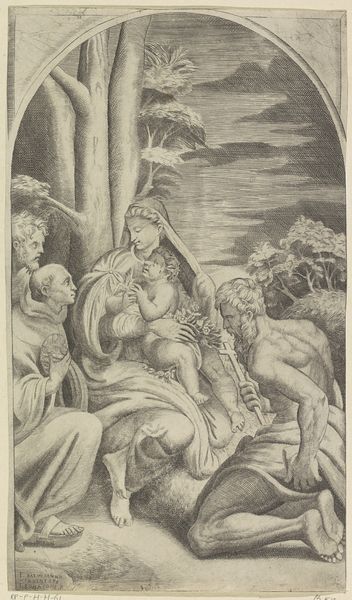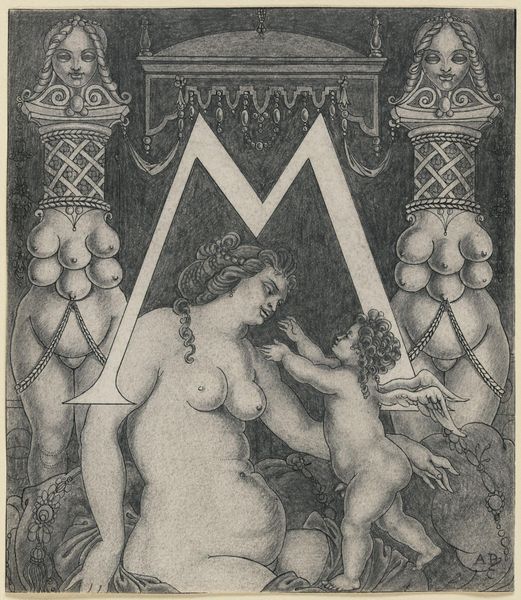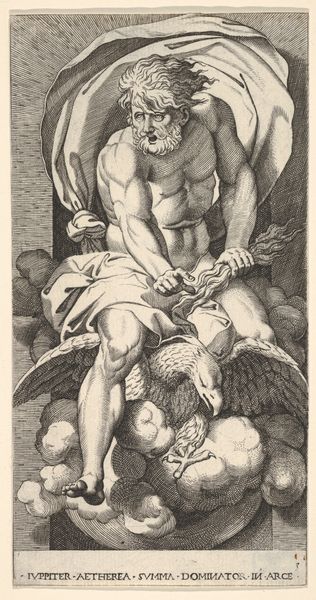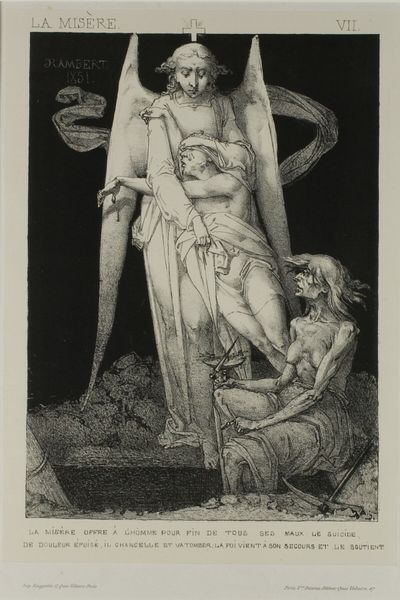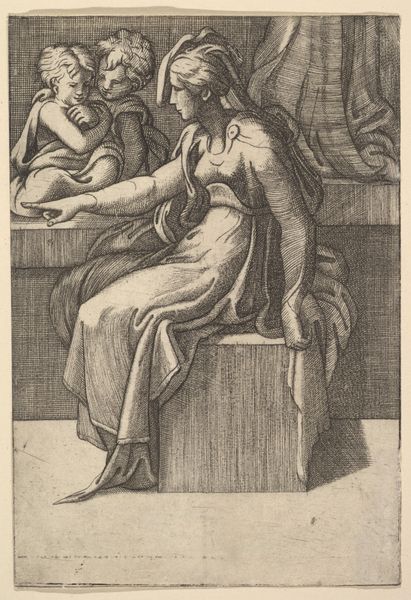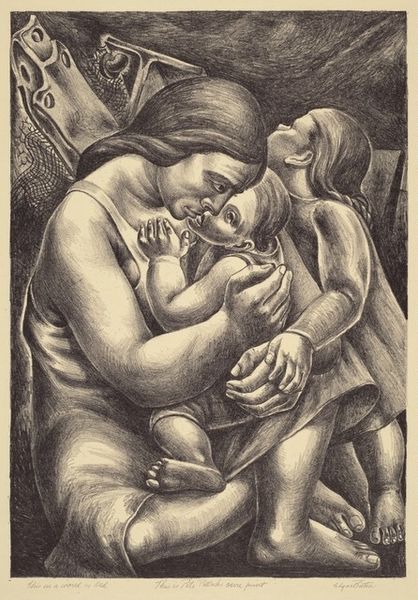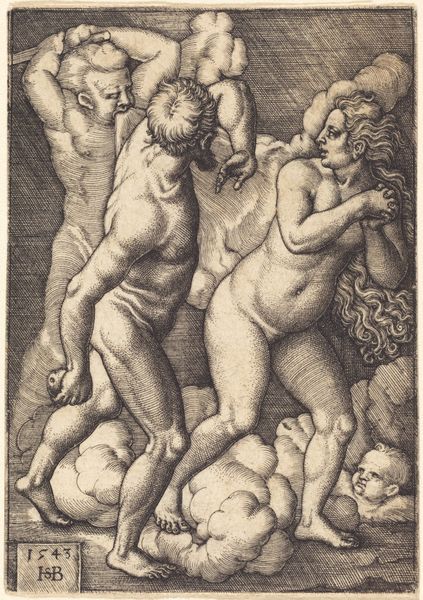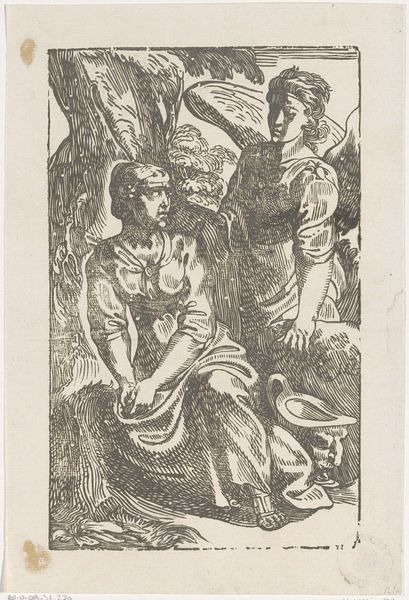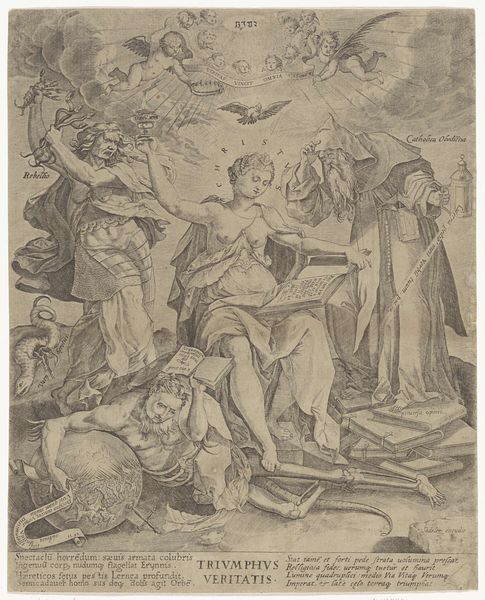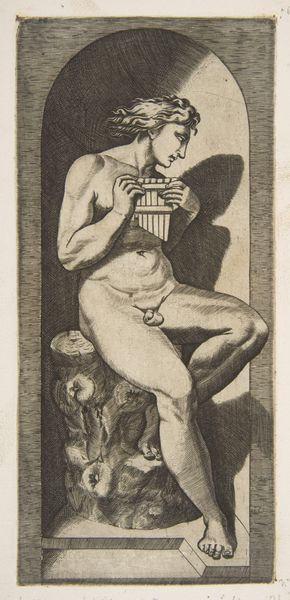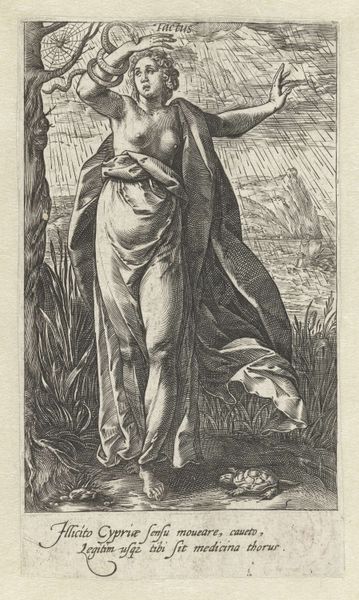
drawing, print, etching, engraving
#
portrait
#
drawing
#
narrative-art
# print
#
etching
#
figuration
#
11_renaissance
#
history-painting
#
italian-renaissance
#
engraving
Dimensions: 5 9/16 x 3 1/2 in. (14.1 x 8.9 cm)
Copyright: Public Domain
Curator: Immediately I sense a quietude. A sort of delicate power held within this seemingly fragile figure. Editor: That's an interesting reading. We are looking at Agostino Veneziano’s print, “Saint Margaret,” dating from around 1514 to 1536. It’s currently held at the Metropolitan Museum of Art. What informs that sense of delicate power for you? Curator: Well, there's the way she regards the space around her with such focus, eyes downward in serene determination, clutching her little crucifix as the dragon curls its tail right at her side. It speaks of contained strength, and resistance, wouldn’t you say? A bit ethereal, too. Editor: Yes, it is beautifully rendered with engraving and etching. But beyond her strength, let’s think about what’s *around* her. The popular image of Saint Margaret evolved a lot in the early Renaissance, especially within the context of humanist thought, with its focus on inner virtues as markers of true holiness. Curator: Absolutely. She tames that beast, internal and external, I think that’s the key of this representation, don't you? I see in her face not fear but resolve. Almost, perhaps, understanding? It feels more personal than overtly triumphant. Editor: The choice to depict Saint Margaret, often viewed as a figure of female strength, holding this crucifix amidst what looks like the cave where her famous confrontation with the dragon took place makes sense. She became a popular symbol for those seeking solace or facing difficult times. In her era, as she still is now, Margaret represents a beacon for those marginalized and oppressed. Curator: A beacon indeed, etched into fragile paper and sent spinning through centuries to remind us that quiet power resonates profoundly. And it looks good, too. A really solid piece of image-making! Editor: Absolutely. It shows us how devotional art like this print was part of a bigger social dialogue during the Italian Renaissance, speaking not just to faith but to identity and resilience.
Comments
No comments
Be the first to comment and join the conversation on the ultimate creative platform.
